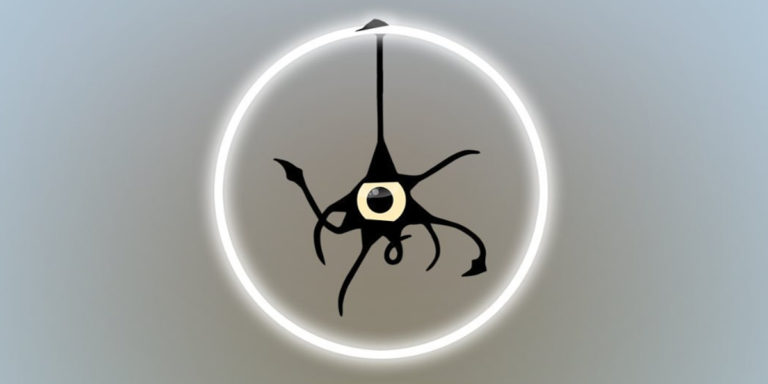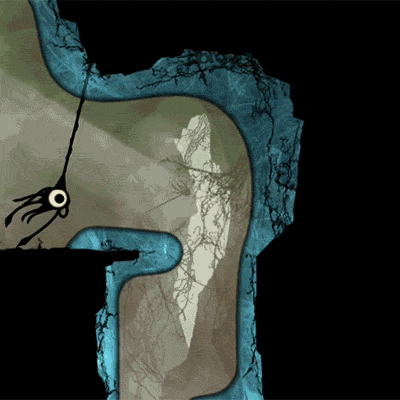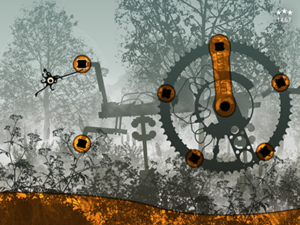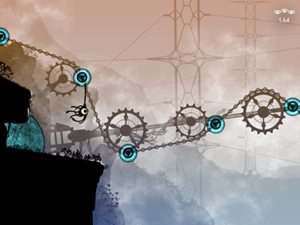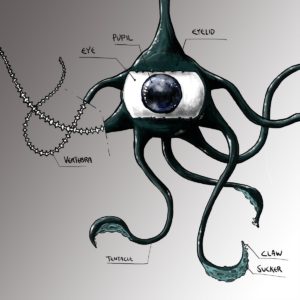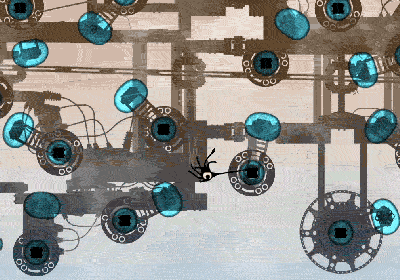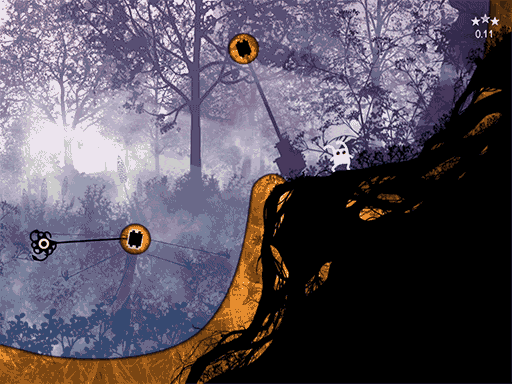Following a successful soft-launch on the Finnish App Store a couple of months ago, Team Ocmo’s much buzzed-about physics-based platformer Ocmo (out now, $4.99) is finally available globally. To find out more about the game, its development, and the people behind it, I today caught up with Jouni Ipatti from Team Ocmo for an in-depth chat. Check out the interview below.
Thanks so much for joining me for this interview, Jouni. Let’s get straight to the questions! When was Team Ocmo founded, where are you based, and how many people work at the studio?
The company was formed in 2012 by Antero Järvi (CEO), Jouni Ipatti (Lead Game Designer/Programmer) and Olli Raila (Artist/Game Designer/Marketing). Our tiny office is in Turku, Finland. While Olli and Jouni are the only ones working full time on the game, there have been periods when more people were involved. Outsourcing of sounds and music was the most notable of these. (Many thanks to Sami Tammela and Ben Rogers for the game’s audio!)
So, mostly 2 people working full time is the answer.
Tell me a little bit about Team Ocmo’s mission statement and game design philosophy?
When we began, our mission was a vague “let’s make a great game for iPhone.” During the prototyping period this gradually got clearer. To create a platformer with crisp touch controls, deep gameplay and overall quality we could be proud of.
Once Ocmo’s core gameplay mechanics were found, we had something that directed our design: other elements of Ocmo are considered good only if they support gameplay, and bad/unnecessary if they don’t.
Take the punishing difficulty of the game for instance; we feel that the best experience Ocmo has to offer, is when playing at the very edge of one’s skills. Nearly completing a level, again and again, until finally succeeding. If the game was easier, there wouldn’t be so many opportunities for this feeling.
While our intention wasn’t necessarily to create a difficult game, the gameplay seemed to demand it, and we listened. Same goes for any other element of the game: having a complex story really wouldn’t add to this playing-in-flow-state goal, so the story was kept simple.
I guess what I’m trying to say is, that our philosophy is to focus on one feeling a game creates, study what supports that best, and forget all else.
Congratulations on the release of your first game, Ocmo. I understand you guys have been working on it for a very long time, so you must feel an enormous sense of achievement and relief now that it’s finally out. What are your best and worst memories from the game’s lengthy development cycle?
Thank you! Yeah, 5 years full time on our first game project is a really long time, and we’re glad it’s finally finished. And a tad proud. Still, it’s not pure relief yet, years of work, and we still don’t know how it will be received. Exiting times, most certainly.
Best memories are probably the times when something we implemented without much thought worked out better than expected. The chain connected gears present in some dynamic levels is one of these. Once we added the feature to our engine, we were surprised how versatile the system actually was. Level design stopped feeling like work, and more like playing with a new toy you didn’t expect to have in the first place.
One of the worst feelings during the project was faced when we were forced to restart designing a part of the game from scratch. It’s generally a good thing to iterate, or even start over, but it gets tiresome after enough tries. Tutorial was the most notorious of these. If memory serves, the current version is the 13th completely different approach to it.
The star of Ocmo is a cycloptic tentacle monster with a penchant for chowing down on bunny rabbits. Where the heck did the inspiration come from for this wonderfully strange character?
Our protagonist went through an evolution process, during the early non-directed prototyping period. We tried out many different concepts, and bits of those stuck to the character. In one prototype there were octopi that grabbed each other forming ropes, in another, a spider that could run and jump. One featured an atmospheric forest that felt like a home to bunnies. Some parts of these just felt like a natural, if insane, combination for Ocmo.
Originally Ocmo had many different sized eyes all around its body. The character is so small, that any emotions would be difficult to interpret if the face was more complicated. So we went with a one eyed approach.
It’s a ninja rope centric platformer. It takes a while to learn, partly because the controls/movements are not typical, partly because the movement types react together creating depth in the movement itself. And mainly because the levels don’t mess around when it comes to difficulty.
Take ninja rope from old Worms games, try again-attitude from Super Meat Boy, and movement system from Trials (where jumping to a platform is not trivial), and you should have a decent idea what the game is about. Fluid, enjoyable rope swinging, fuelled by constant deaths. Certainly tough, but always fair.
Our target audience is a necessary result of the game’s movement system. 5 different movement options (walk, brake, jump, grab, pull) is inherently more complex than flappy birds. And inherently harder to learn. But after we implemented it, we found out that it’s truly enjoyable, once learned.
Those players that are not willing to spend some time to learn the basics, simply are not in our audience, and we want to be upfront about this. Sure, this will constrain Ocmo’s reach to a smaller sector than more casual games have, but that’s not necessarily a bad thing. There’s no lack of casual games on the App Store, so perhaps there is room for Ocmo.
Ocmo is a truly stunning looking game. Did any existing games inspire its outlandish art style? (The screenshots and GIFs that I’ve seen put me in mind somewhat of titles like Badland and Incredipede.)
Limbo was a big influencer to our art. And also Contre Jour. Both are really beautiful games with black silhouette style landscapes. The choice of silhouettes was also a practical one: it makes it possible to smash art on top of itself, creating new shapes out of existing ones.
I think Badland would have been an influencer too, had we started a bit later.
Ocmo has been in soft launch mode in your home country of Finland for the past couple of months. What kind of feedback and response did you get from early players, and did it help you to improve the game ahead of its global release?
Do you have any advice for fellow indies who may be trying to break into or succeed in the mobile games industry?
Start small is probably the one piece of advice we are experts at not following. Game development is hard, and mistakes will be made. The smaller the project, the less is the cost of a mistake. But learning doesn’t scale in the same way. Small projects minimize the cost of mistakes, while maximizing the possibilities to learn.
Another lesson we’ve become painfully aware of is that underestimating the amount of work left is a disastrous habit. It’s easy to keep using bad tools for instance, if you think the project is soon finished anyway. When it turns out not to be the case, it becomes clear that migrating to better solutions would have been more efficient, no matter the initial cost of doing so.
What’s next for Team Ocmo? Do you have any upcoming projects in the works that you can tell me about?
The hope of porting Ocmo to Steam/consoles is as far as our horizon currently reaches. And even that is somewhat dependent on how the game is received on iOS.
Thanks for such a great interview, Jouni. I wish you guys every success with Ocmo! 🙂
If this interview piqued your interest in Ocmo, you can download the game on the App Store right now. You can also find out more about the game by visiting Team Ocmo’s official site and by following them on Facebook, Twitter and Instagram.
If you enjoyed this story and want to read more like it, please consider supporting the author by buying him a coffee.


